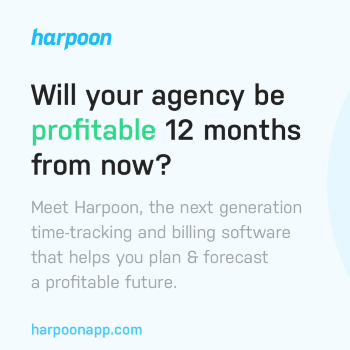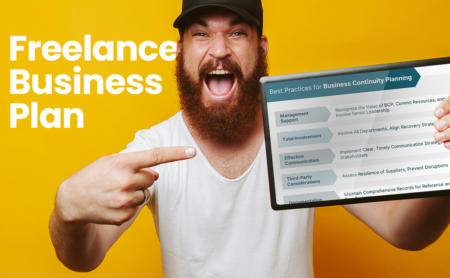“I’m a freelance newbie, and I can’t land clients despite the many proposals I send to prospects,” Andrew grieves.
Lucy sighs:
“I’m a savvy freelance writer with advanced skills in the niche, but prospects seem to miss this point in the proposals I send to them. Most never get back.”
I nod with sympathy:
Whatever experience and background, most freelancers look for a failproof method to send proposals that win clients. Guess what? There isn’t any. Whether you write custom college essays, craft marketing texts, or freelance on books as a ghostwriter, you can’t stick to a single template for sending your bids.
But you can organize it properly to boost your chances of landing a gig. In this article, I’ll reveal the anatomy of a winning freelance writing proposal that helps stand out in the fierce competition of the freelance workforce.
After 10 years in creative content creation, I do have some insights to share on the subject.
Ready to stand out as a freelancer? Here we go!
What (Exactly!) Is a Proposal, and Why Do You Need a Killer One?
A proposal is a detailed pitch or document a freelancer sends to prospects (companies or individual clients). It’s an instrument to introduce yourself, mention your skills, and outline how they will address the client’s needs.
Confession:
Before 2020, I didn’t give a damn about proposals. I wrote texts, gathered them in a portfolio, and shared the link with potential clients when pitching them. Let’s face it, it was enough back then: I landed gigs, grew and polished my skills, and built my reputation as a professional content writer.
Boom!
The post-COVID era has changed the rules of this game. Freelancing broke new ground and went from a side hustle to a career path for many. Result? The market gets a massive pool of talent — freelancer population has reached over 1.5 billion people globally in 2024 — and turns into a bloodthirsty hunt for clients.
ChatGPT and its fellow AI writers stoke the fire, threatening to steal a freelancer’s job, thus encouraging specialists to look for alternative ways to stand out.
An effective freelance proposal is your trump card to win this battle. Your human creativity, personalization skills, and added value are your secret weapons to make your proposal original and outstanding.
How to Write a Proposal: The Structure
I’ve watched tons of video tutorials and read myriads of articles on freelance proposal writing. Most of them mention the list of, as they say, “crucial” (man, I hate this word now, thanks to AI and AI detectors) elements to include in your proposal to make it shine.
Here’s the list:
- Introduction: Provide a concise overview of yourself and your work. Here, you can include your landing page (if you have one) or a brief about your services.
- Understanding the project you are applying to: Demonstrate your understanding of their requirements and that your vision aligns with theirs.
- Scope of work: Give them details of what you’ll deliver, with all the milestones and limitations. Provide a detailed timeline of when the client can expect the result.
- Approach: Explain the how behind your work (what methodologies and tools you’ll use to complete the project/task).
- Credentials: Highlight that your experience and expertise are relevant to what your prospect is looking for. Showcase your portfolio, testimonials, case studies, etc.
- Pricing: State your fees in the proposal and be transparent about payment terms.
- Contacts: Make it easy for the client to reach you.
I don’t see any problem with the elements themselves. All of them are essential to provide to potential clients so that they know if you fit their expectations and needs. The problem is different:
If you take this structure as a template and stick to it when writing your proposal, the result will disappoint your prospects. Your pitch will look mechanical, non-genuine, and emotionless.
What to do?
Take all those elements, mix them up, flavor them with your authenticity, add personalization, and put a pinch of storytelling to evoke the desired emotions in readers. Humans, not bots, will read your proposals; unlike bots, humans are emotional; inspire the right emotions in a prospect — and your chances of winning their favor will skyrocket.
Below, I’ll share some tips on this.
How to Write a Proposal: Tips
- Come up with a catchy subject line.
- Give them value from the start.
- Mind your tone of voice.
- Make your proposal visually appealing.
- Offer a freebie.
Come up with a catchy subject line
You already know the elements of a proposal. It’s time to combine them into compelling text and send it to prospects. Given the competition, the hardest part is to make them notice your email in the inbox and open it.
Take some time to craft an engaging yet relevant subject line for your proposal.
My tricks:

- I start it with an emoji, if applicable. (It depends on the client, the business specifics, and the tone of voice they use in communication with the audience.) A tiny emoji serves as an eye-catcher while scanning incoming emails.
- I structure a subject line as a question, thus evoking curiosity to open my email and learn more.
- I mention something of value for the client. (More on that below.) Who doesn’t want to check what others have for their business?
For instance, when I pitched publishing houses with my book, my subject line was, “🎁 What a book a new book manuscript?” It’s catchy, intriguing, and relevant to what they were looking for: With the 70% open rate, it did the job!
Give them value from the start
Your proposal is not about you but what you can give to the client.
What is your USP (unique selling proposition)? What sets you apart from other freelancers? Is it your approach to work, the topics you cover, your unique methodology, etc.?
Focus on emphasizing the value and solutions your expertise can provide to their business. Show your genuine interest in the project: Your proposal should communicate your understanding of their needs and your willingness to fulfill them.
When showcasing your value, back up your claims with relevant skills and experience. Boasting is super (if done right), but they need proof of your ability to do what you promise.

My case:
Guest blogging helps me build my portfolio and demonstrate my expertise, so I sometimes pitch websites to offer a comprehensive guest post that will complement their content strategy. For them to see I can do that, I add a few samples of my published works to that proposal.
(Sure thing, those samples are on the topics relevant to their niche.)
Mind your tone of voice
Keep it conversational yet professional; sound confident yet warm. Balance is key: Write like you’re in a friendly chat but showcase your expertise.
My tip: Smile while writing. It helps maintain a positive tone throughout the message and communicates those positive vibes to the reader.
Don’t copy-paste one proposal template for all prospects you intend to reach—personalize each.
- Address the individual needs of every client.
- Add personal touches throughout your proposal: Call the client by name, reference specific points from their communication, mention something about their company, etc.
- End with a call to action to express your eagerness to hear feedback.
Make your proposal visually appealing
No one wants or has time to read long walls of text, so do your best to make your proposal reader-friendly at first glance.
When using a layout, choose neat and organized ones with clear structure and aesthetically pleasing design. When writing an email, stick to the rules of web writing:
- Short sentences and paragraphs
- White space between paragraphs for more comfortable scan and reading
- Active verbs, descriptive adjectives, and up-to-point information
- In-text links to your portfolio or other references (Some prefer not to open attached files from unknowns for security.)
- 5-7 paragraphs maximum: salutation, introduction, offer, credentials, and call to action
Offer a freebie
Think of some extras you might offer with your proposal. For example, a discount on your services or in-kind offers that can make you a more attractive candidate.
As a content writer, I often include something of these in my proposals: designing custom images for the article I’ll write, uploading and formatting it in WordPress, repurposing it for other channels (social media posts, SlideShare, optimizing it for search engines, and so on.
Now, It’s Time to Craft Yours!
A freelance proposal is your powerful weapon for specialists willing to stand out from the competition, build their brand, and win more clients. Now that you know how to write it and have tips on crafting it, it’s time to practice!
Keep the conversation going...
Over 10,000 of us are having daily conversations over in our free Facebook group and we'd love to see you there. Join us!



